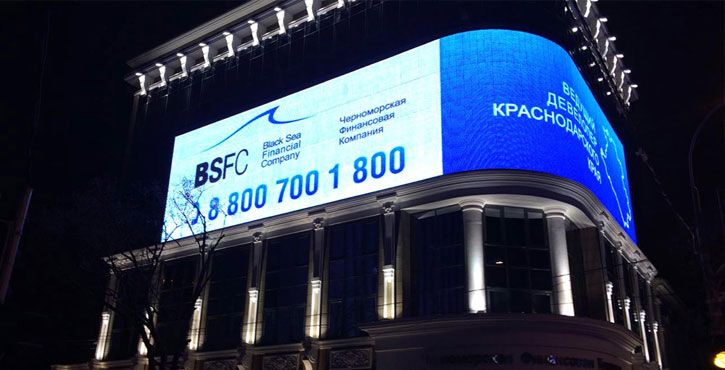The angle of view of LED display depends on the angle of view of LED device. At present, most outdoor LED full-color displays use elliptical LEDs with horizontal viewing angle of 100 and vertical viewing angle of 50, while indoor LED full-color displays use patch LEDs with horizontal and vertical viewing angles of 120. LED full color display on the highway
The angle of view of LED display depends on the angle of view of LED device. At present, most outdoor LED full-color displays use elliptical LEDs with horizontal viewing angle of 100 ° and vertical viewing angle of 50 ° while indoor LED full-color displays use patch LEDs with horizontal and vertical viewing angles of 120 °. Due to its particularity, the LED full-color display screen on the highway generally selects the circular led with 30 ° viewing angle. Some high-rise led full-color displays require high vertical viewing angle. Angle of view and brightness are contradictory to each other, and large angle of view will inevitably reduce brightness. The choice of perspective needs to be determined according to the specific use. How to ensure the color difference consistency of LED full color display screen?
The hot market of outdoor LED full-color display promotes the development of surface mounted full-color display. Due to the complex installation environment, outdoor LED full-color display has high technical requirements. It not only needs to deal with various adverse climate changes, but also needs to defend against the invasion of chemical gases such as automobile exhaust. A few years ago, outdoor LED full-color displays were almost all plug-in. The change of this trend benefits from the progress of outdoor SMD technology. Outdoor surface paste full-color screen has obvious advantages over plug-in in terms of screen display, beauty, perspective, maintenance, etc., which can meet the requirements of outdoor use.
What are the ten development trends of LED full color display in the future? In the future, led full-color display will continue to improve product technology, expand market space, and give full play to the advantages of energy conservation and environmental protection to achieve better and creative new applications. To sum up, in the future, led full-color display will show ten development trends: super large screen, high-definition and high-density, energy-saving, intelligent, light and thin, point by point normalization, civilian, indoor and outdoor screen, integration of decorative landscape and display screen, and screen enterprise lighting. The rise and development of LED full-color display provides the foundation and demand for the super large screen. At present, some specific markets, such as large-scale advertising business circle, large amusement places, in order to attract more advertising owners and audience attention, vigorously build large area led full-color display.
Box calibration can greatly improve the display quality of LED full-color display after splicing, and has higher efficiency than on-site calibration, which is not limited by time and site, and lower cost. Therefore, the box correction technology will become an indispensable part of the LED full-color display manufacturing, and has a good application prospect. Box correction is an effective way to improve the image quality of LED full-color display screen, and its key technology is mainly reflected in the following two aspects: one is the uniformity of pixels inside the box, the other is the consistency of brightness and color between the boxes.
